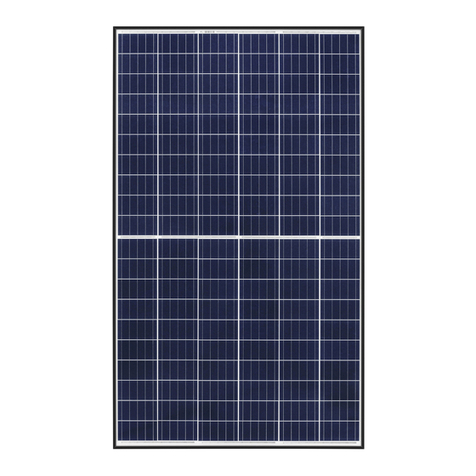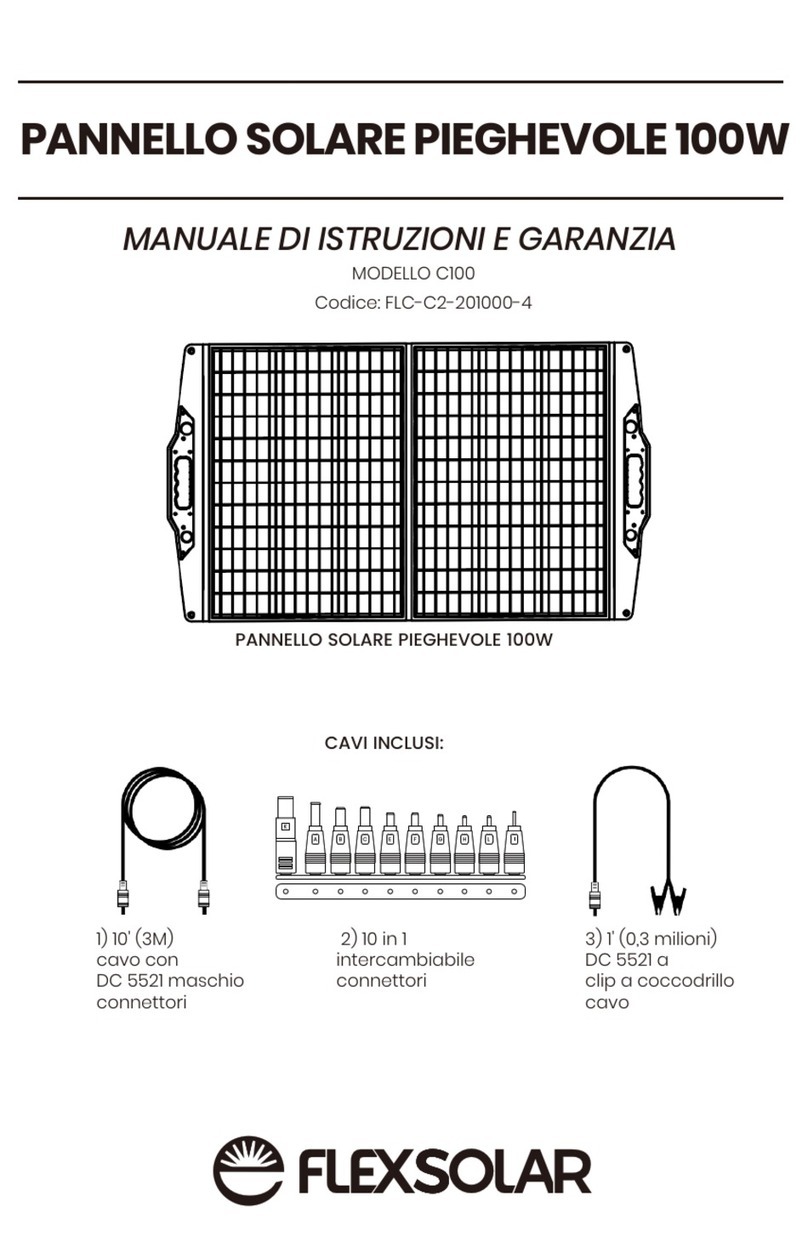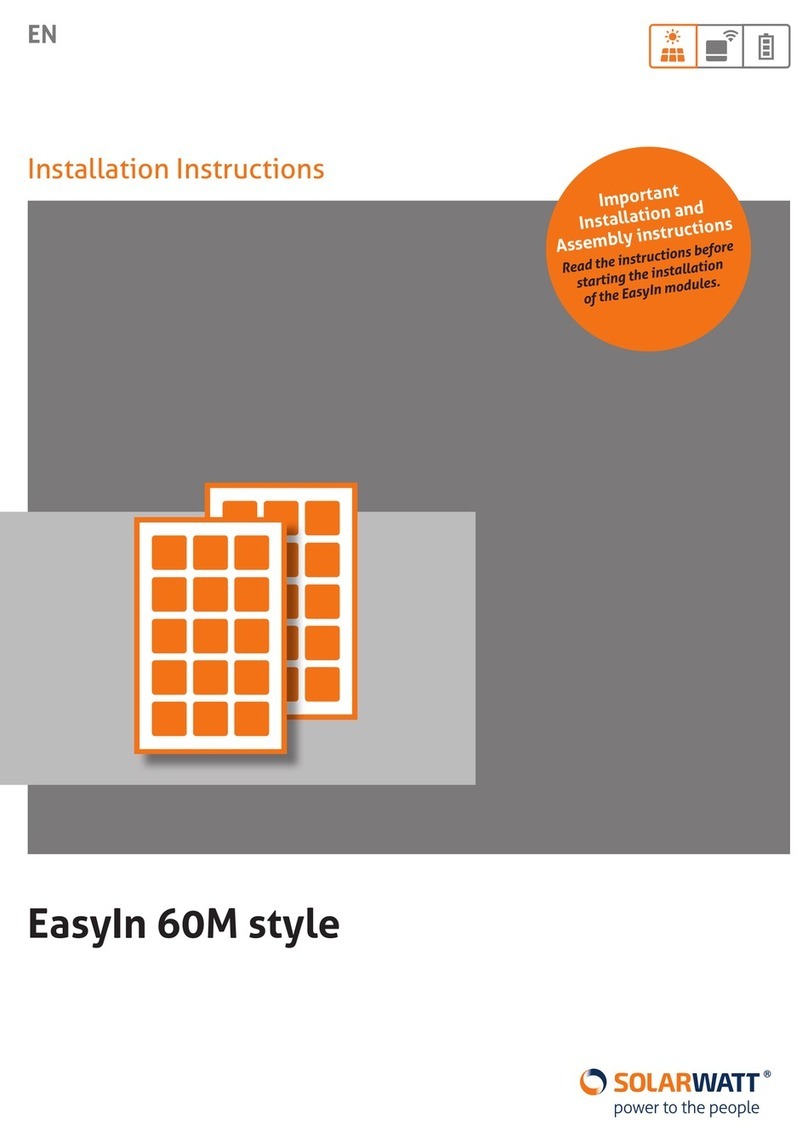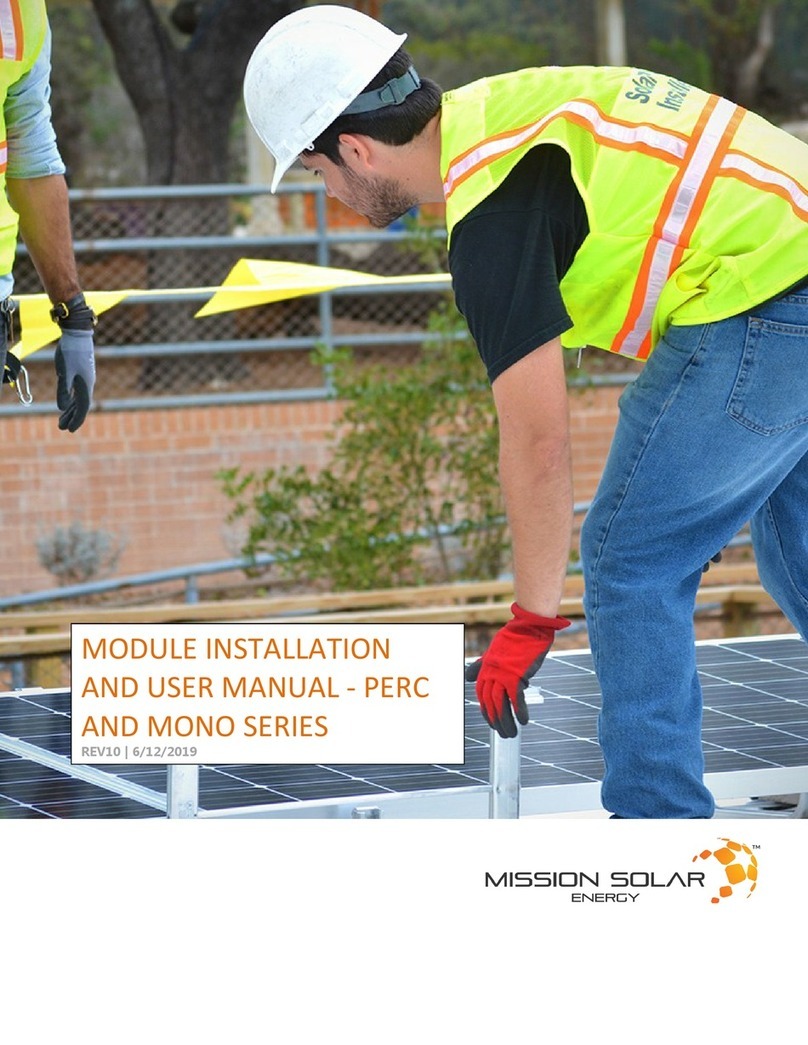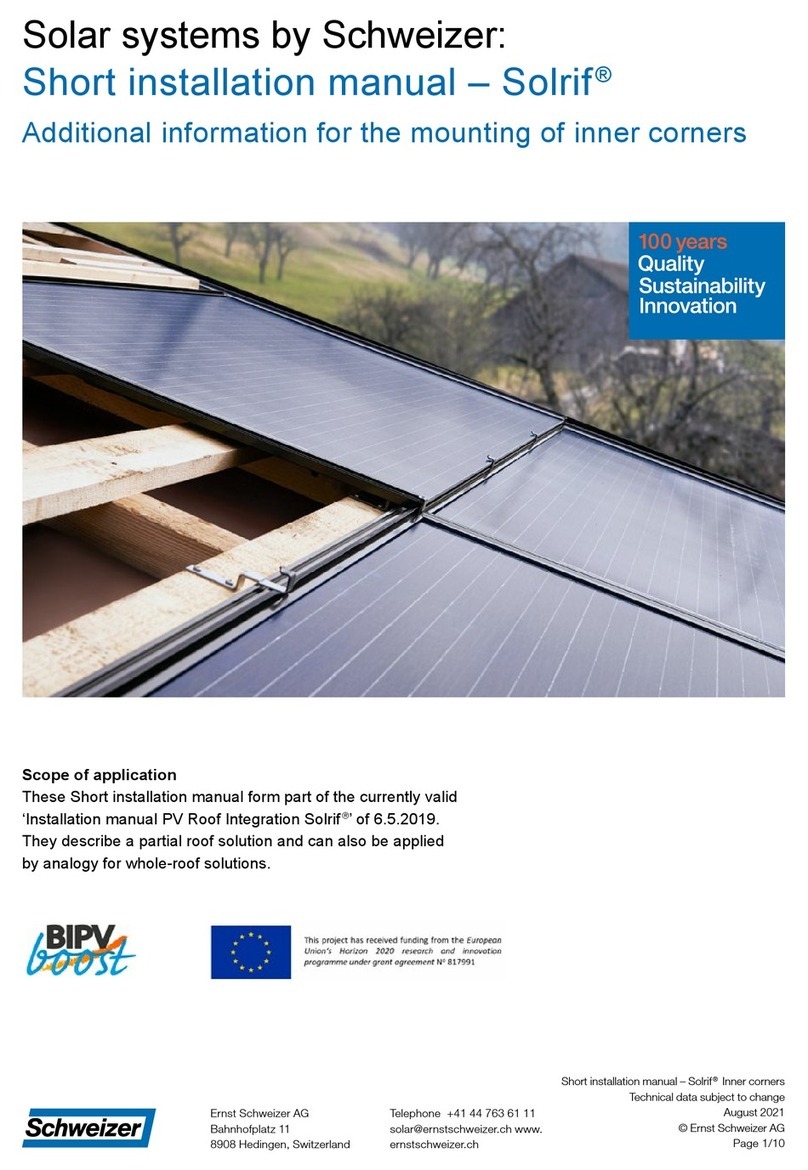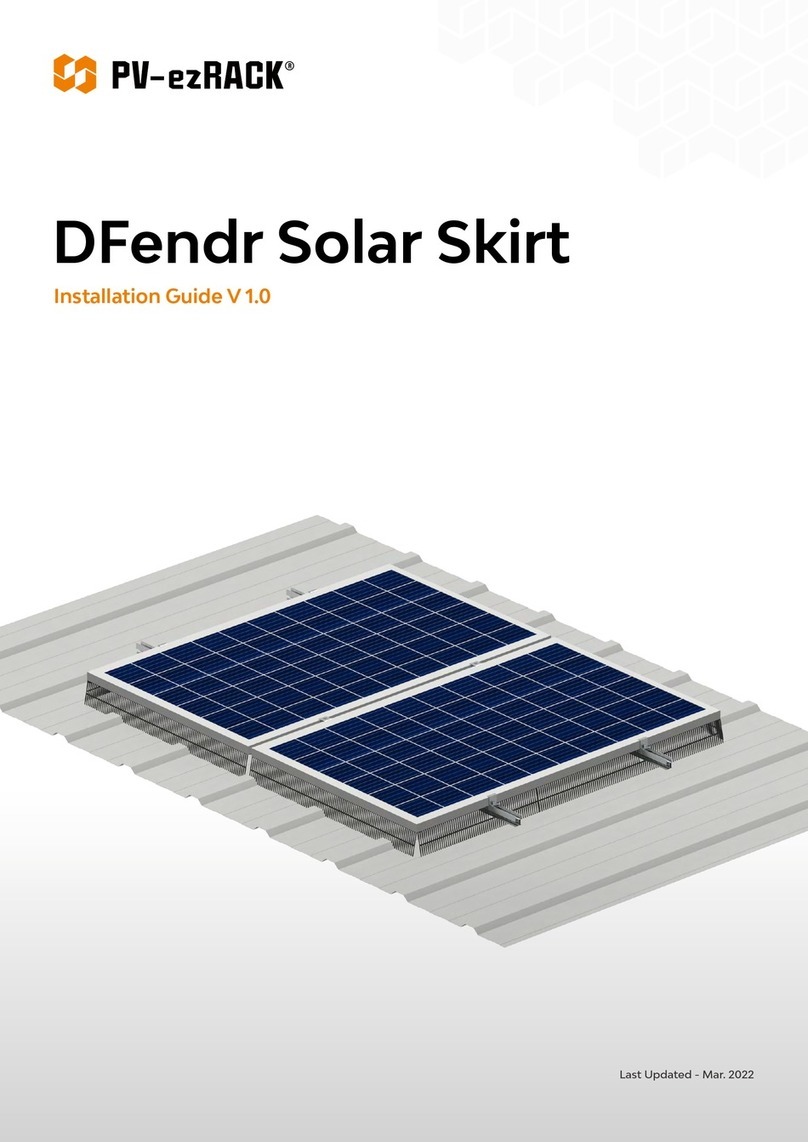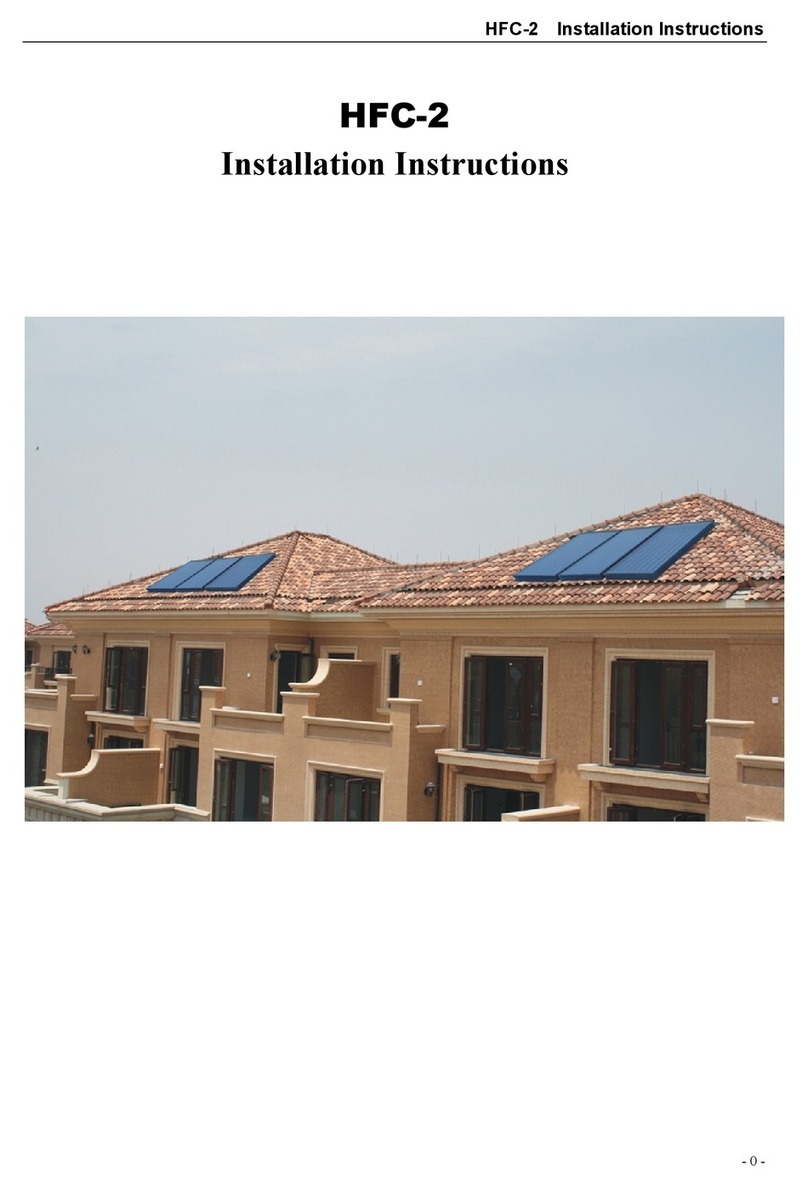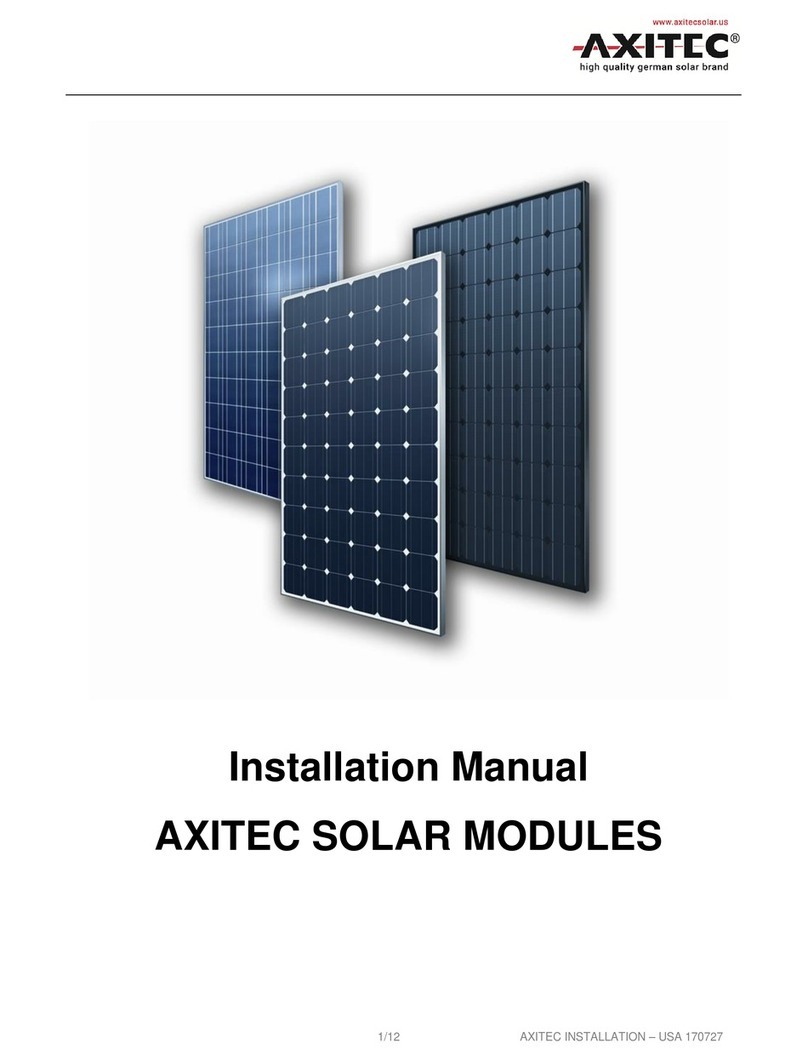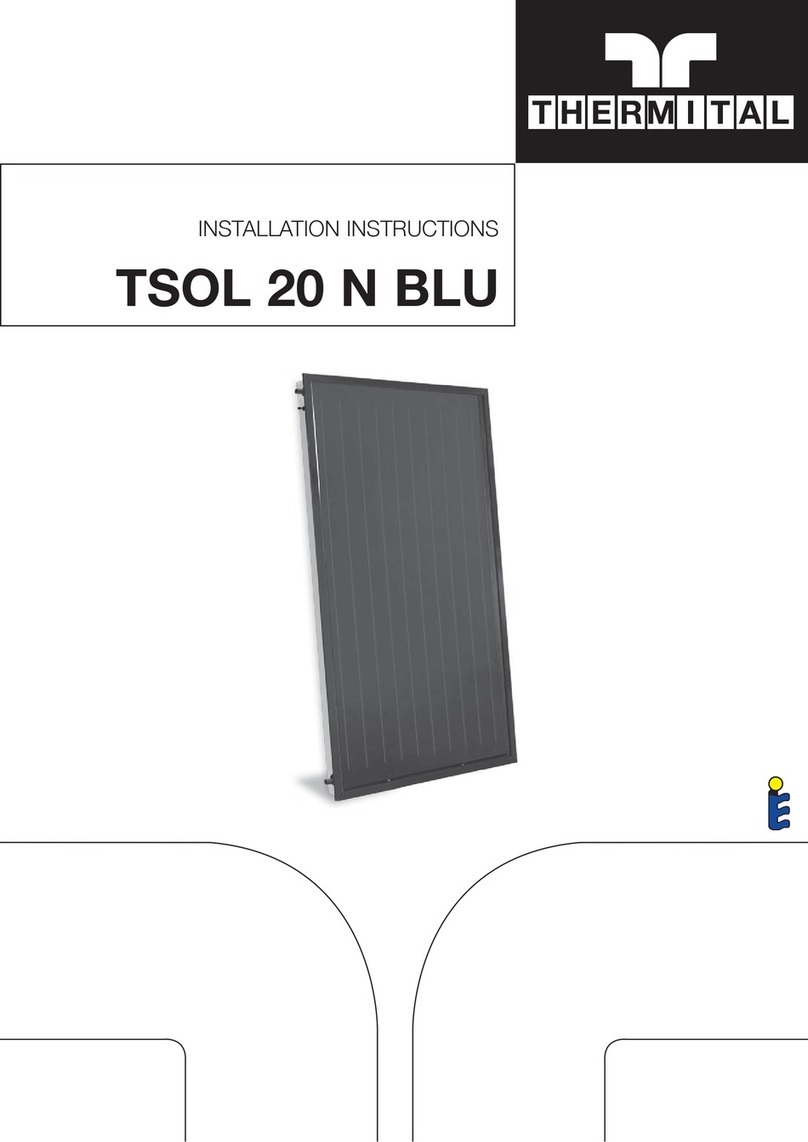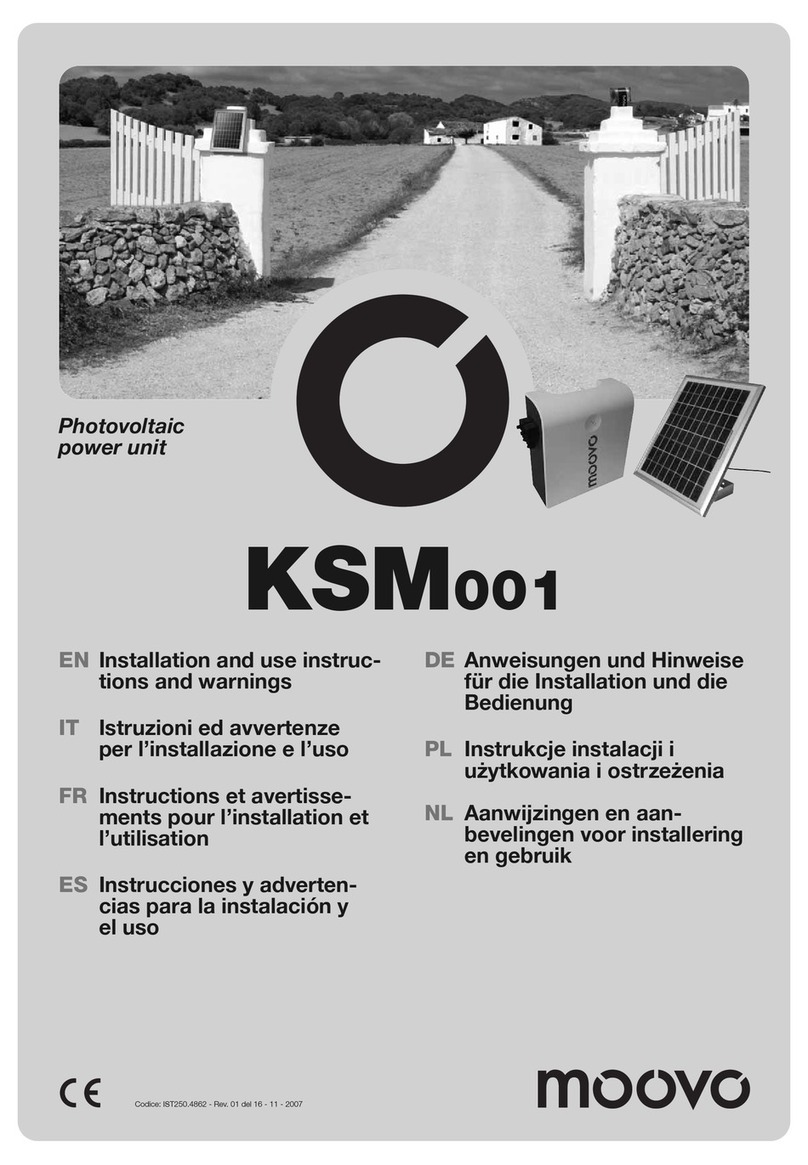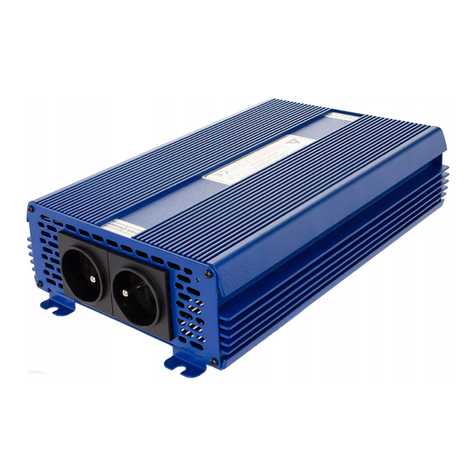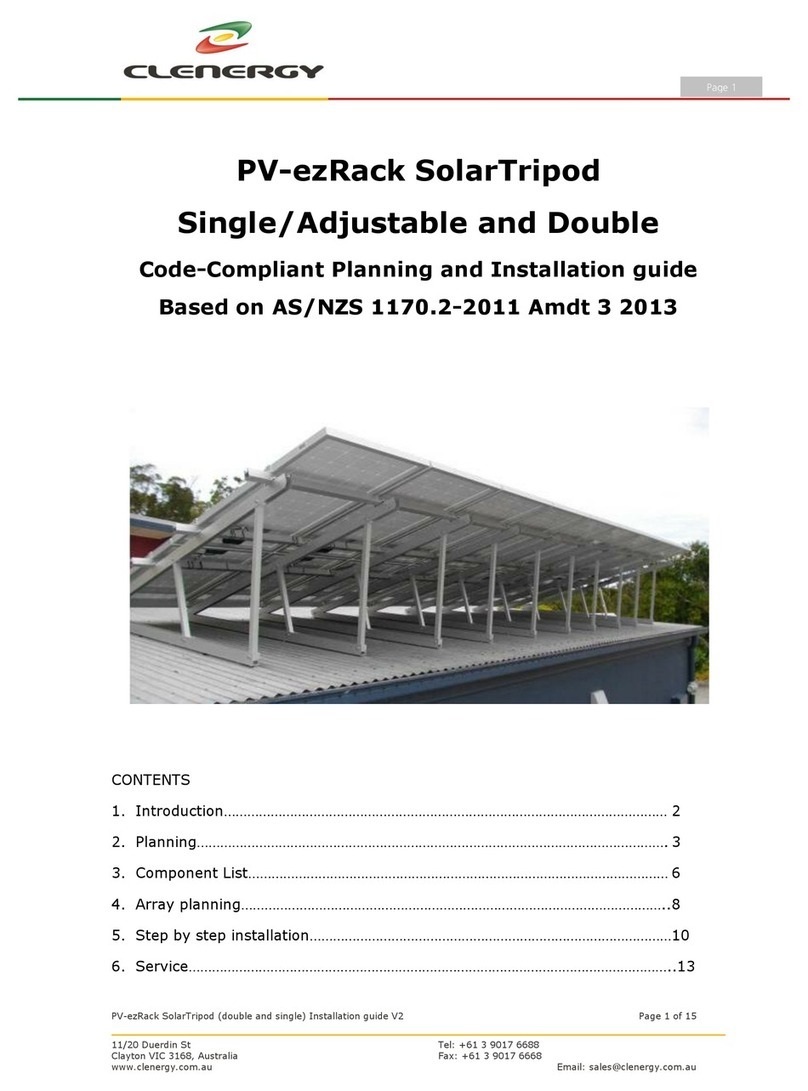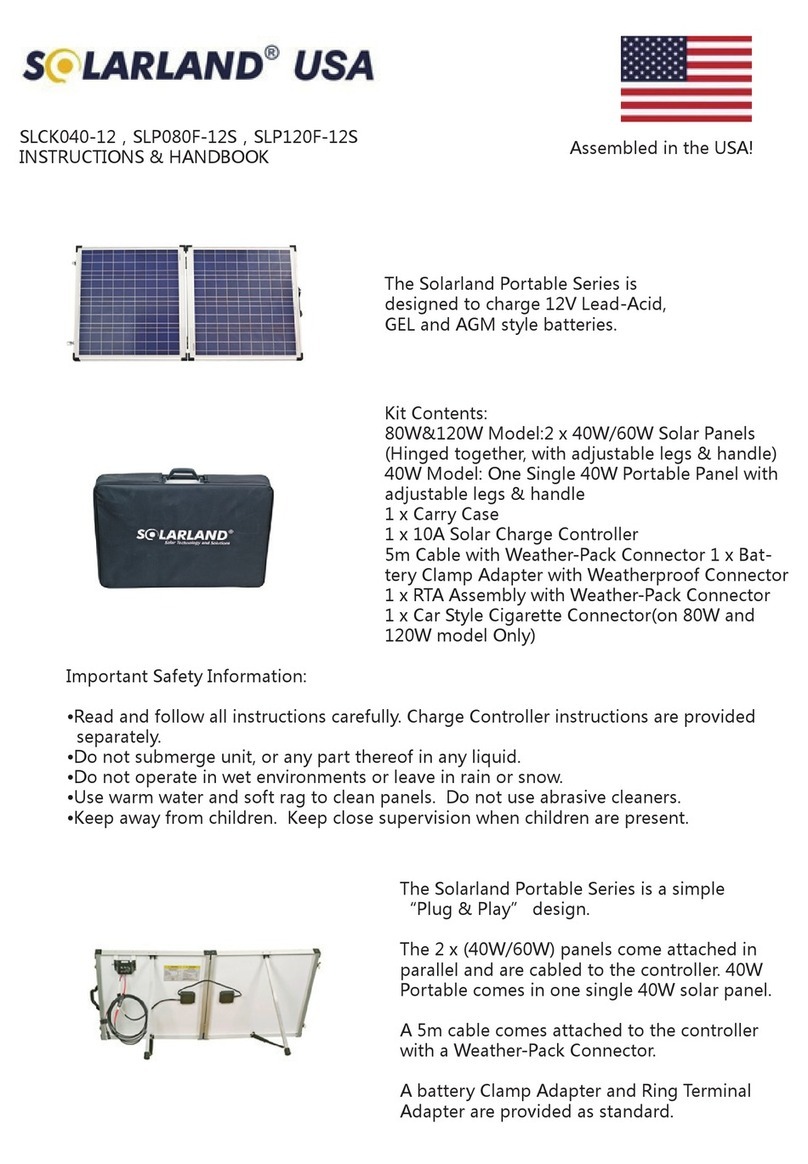
Solar Energy Systems 01.09.2009 Page 5
Mounting Directions for In-Roof Photovoltaic Systems
Ernst Schweizer AG, Metallbau, CH-8908 Hedingen, Telefon +41 44 763 61 11, Telefax +41 44 763 61 19, www.schweizer-metallbau.ch
2 Safety Instructions
2.1 Use According to Regulations
The photovoltaic system is intended solely for the generation of solar power. Mounting is to occur only upon roof
constructions in accordance with the present installation manual.
There is no guarantee for alternative applications, even if analogous. Categorically any such application is not in
accordance with regulations.
2.2 Safety Regulations
The operator of the photovoltaic system is responsible for seeing that all relevant legal regulations and guides are
adhered to.
Start, operate and maintain the photovoltaic system only in accordance with the following regulations and
standards.
Installation manual
Warning labels and tips on the photovoltaic module
Further applicable documents
System specific regulations and requirements
Valid international, national and regional specifications, especially as pertaining to the installation of electrical
appliances and systems, to working with direct current and to the regulations of the local power company
applicable to parallel operation of solar power system
Regulations of the construction employers’ liability insurance association
Regulations concerning accident prevention
2.3 Personnel Qualifications
The operator and the installer are responsible for engaging only trained and schooled specialists to carry out
installation, maintenance, initial operation and dismounting.
Ensure all personnel have understood this manual and are capable of implementing the instructions.
Ensure all personnel are familiar with and adheres to the pertinent accident prevention and safety regulations.
Ensure all personnel uses appropriate protective clothing and equipment.
2.4 Changes and Alterations
Changes and alterations to the installation system can damage the photovoltaic module or impair its proper
functioning.
Refrain from making changes or reconstructions during the process of installation, excepting for the steps
described in this manual.
2.5 Sources of Danger
The photovoltaic module is a product made of glass and should be handled as such.
Do not place against bare edging.
Do not step on or burden improperly.
